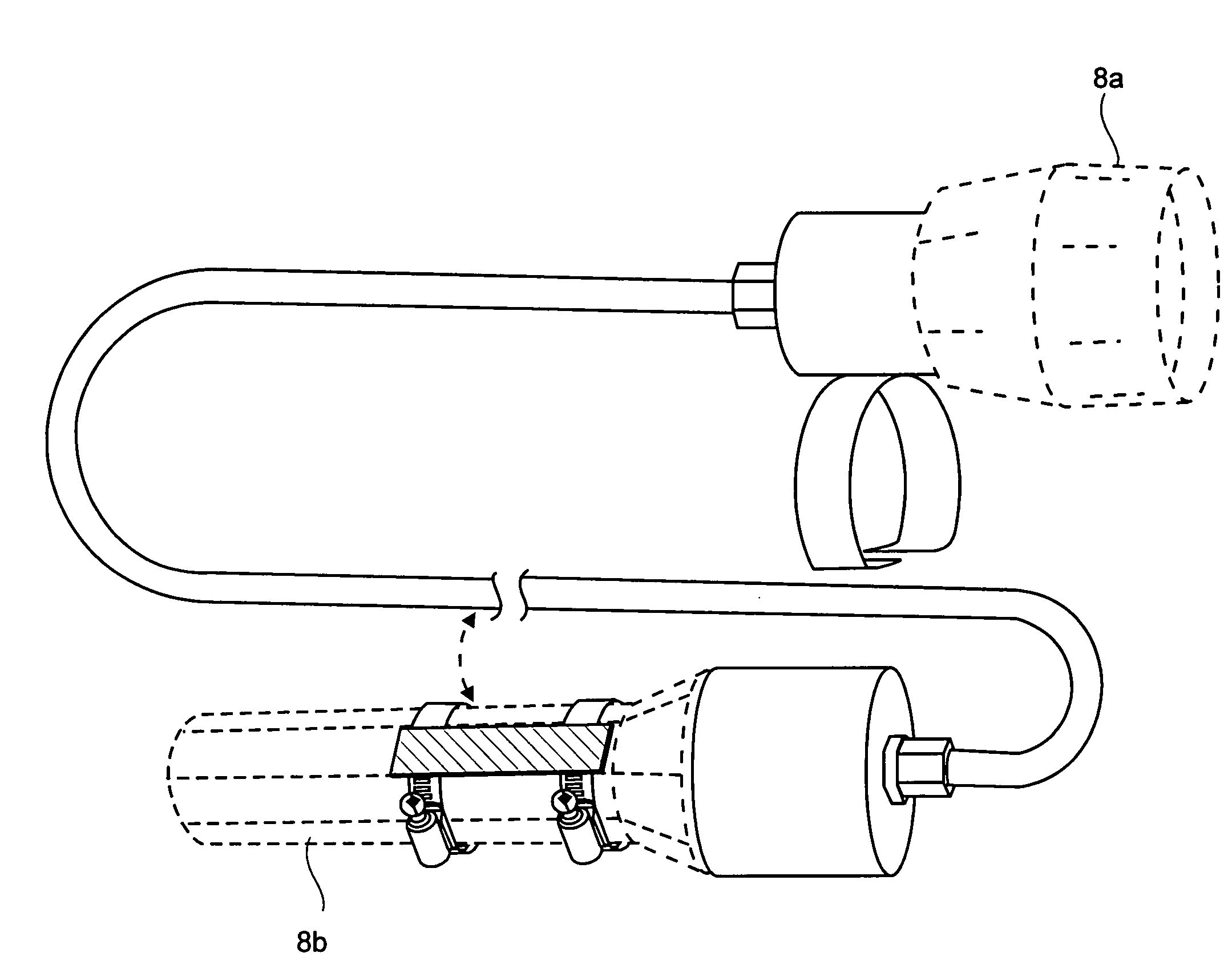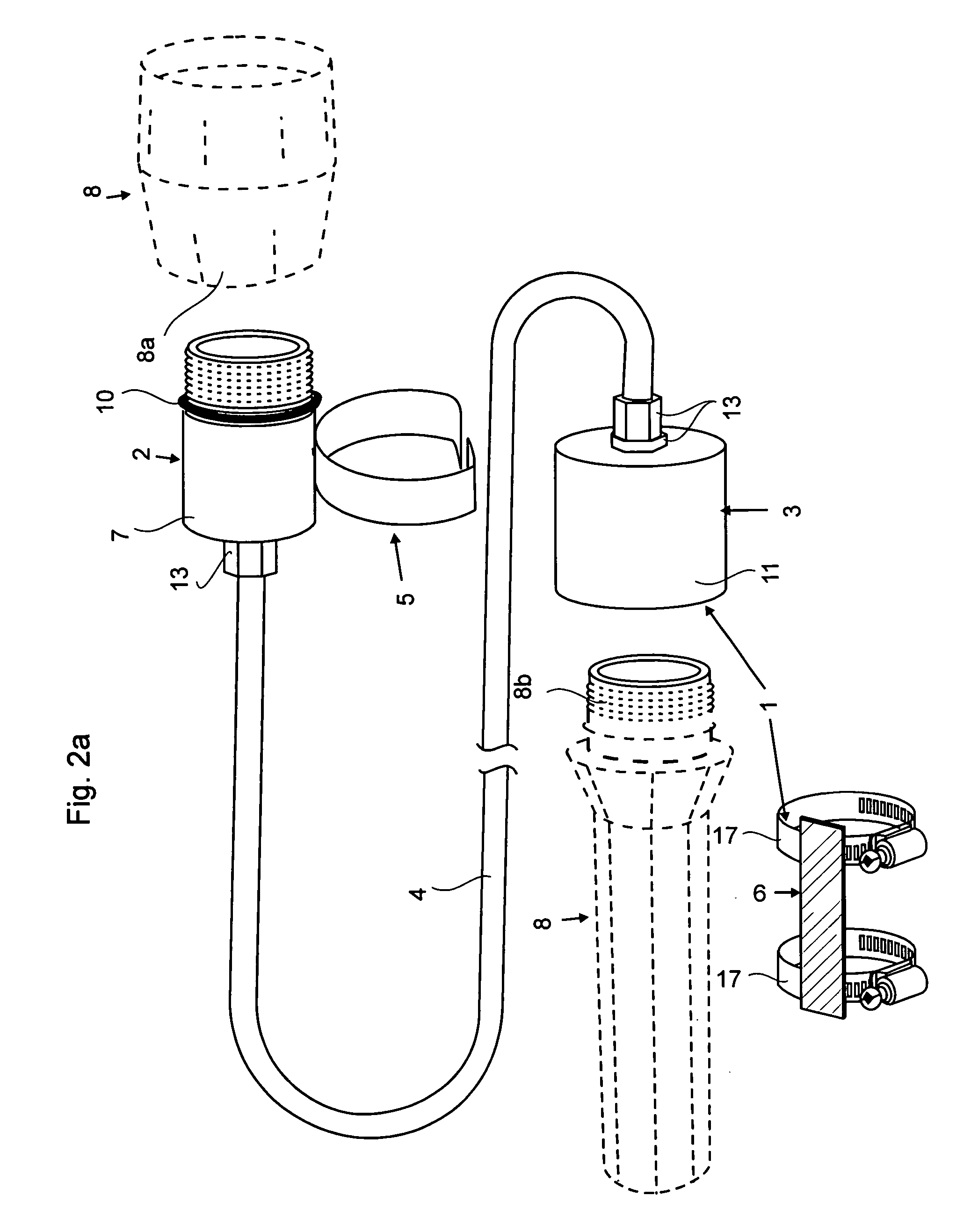Apparatus for converting a dive light into a canister light
a technology of canister light and dive light, which is applied in the direction of underwater equipment, lighting support devices, coupling device connections, etc., can solve the problems of substantially affecting underwater movement, unable to explore caves and shipwrecks, and virtually impossible underwater exploration without the use of lighting equipment, etc., to achieve less bulk, less weight, and relatively low cost
- Summary
- Abstract
- Description
- Claims
- Application Information
AI Technical Summary
Benefits of technology
Problems solved by technology
Method used
Image
Examples
Embodiment Construction
[0031]Referring to FIG. 1, a dive light converter 1 according to the present invention is shown, interposed between a battery compartment 8b and a head 8a of a commercially available dive light—indicated by dashed lines. In a preferred embodiment shown in FIGS. 2 to 6 the dive light converter 1 comprises a male adaptor 2, a female adaptor 3, a connecting cable 4, a hand-mount assembly 5, and a belt attachment assembly 6. The male adaptor 2 comprises a housing 7 for mating with the dive light head 8a in the form of, for example, a screw thread, and a seal 10 such as an o-ring interposed between the housing 7 and the dive light head 8a, as shown in FIG. 2. Mating of the housing 7 with the dive light head 8a provides a compression fitting of the o-ring 10 made of, for example, Neoprene® ensuring proper sealing of the connection for water depths of approximately 150 m. The female adaptor 3 comprises a housing 11 for mating with the dive light battery compartment 8b. Similarly to the mal...
PUM
 Login to View More
Login to View More Abstract
Description
Claims
Application Information
 Login to View More
Login to View More - R&D
- Intellectual Property
- Life Sciences
- Materials
- Tech Scout
- Unparalleled Data Quality
- Higher Quality Content
- 60% Fewer Hallucinations
Browse by: Latest US Patents, China's latest patents, Technical Efficacy Thesaurus, Application Domain, Technology Topic, Popular Technical Reports.
© 2025 PatSnap. All rights reserved.Legal|Privacy policy|Modern Slavery Act Transparency Statement|Sitemap|About US| Contact US: help@patsnap.com



